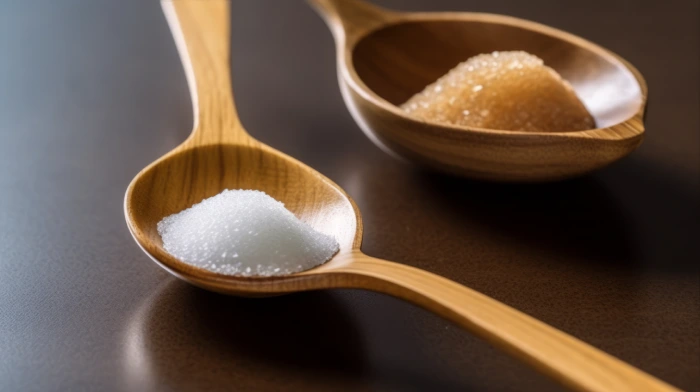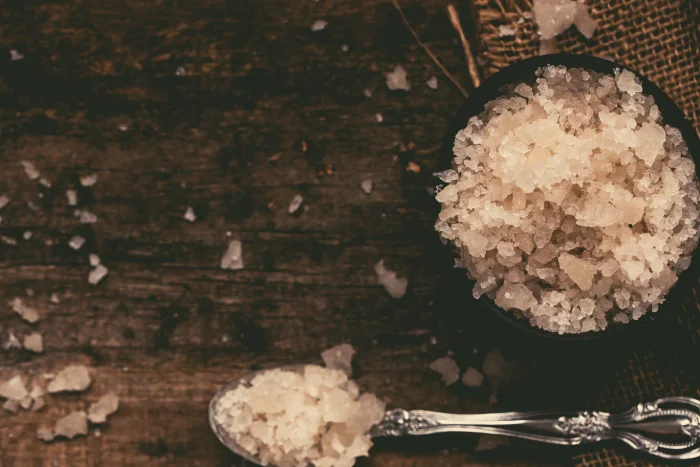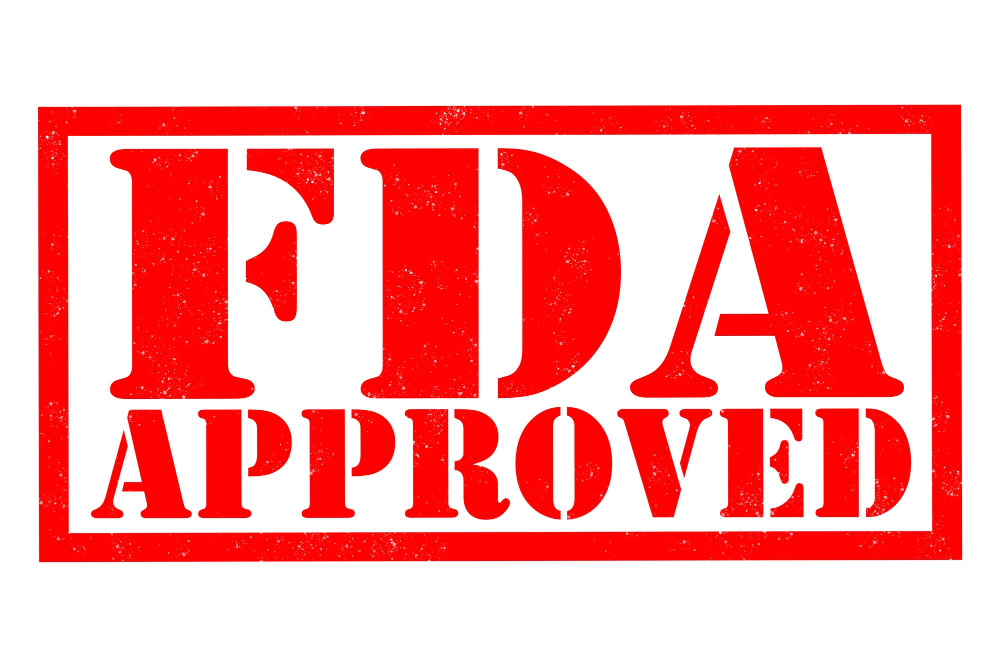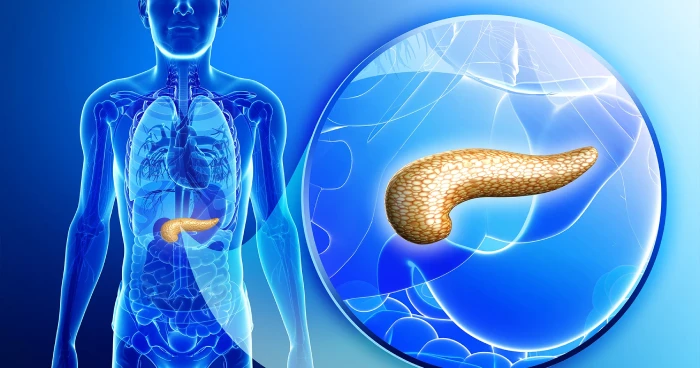Hey there, wellness warriors! 👋 I’m literally bouncing off the walls with excitement to dive deep into one of the most fascinating sweeteners out there – crystalline fructose. And no, I’m not just sugar-high (though I might’ve had one too many taste tests while researching this article 😉). As someone who’s been studying and writing about nutritional science for over a decade, I can tell you that crystalline fructose is way more interesting than your average sweetener, and by the end of this article, you’ll understand exactly why I’m so hyped about it!
What Exactly is Crystalline Fructose? Breaking Down the Basics
Imagine you’re at a fancy restaurant, and the chef presents you with a perfectly crystallized sugar sculpture. Now, picture that same level of refinement, but on a molecular level – that’s crystalline fructose for you! Unlike its rowdy cousin high fructose corn syrup (HFCS), crystalline fructose is like the sophisticated member of the family who went to finishing school. It’s a highly purified form of fructose that’s been processed into a fine, white powder, containing about 99.5% pure fructose.
The Journey from Plant to Powder
The story of how crystalline fructose comes to be is actually pretty fascinating. It starts with corn (usually) or sometimes sugar cane, going through a complex process that would make any chemistry professor proud. Here’s what happens:
- First, the corn is milled and processed to extract its natural starches
- These starches are then broken down into glucose through enzymatic processes
- The glucose undergoes isomerization to become fructose
- Finally, the fructose is crystallized and purified to achieve that perfect 99.5% purity level
It’s like taking your favorite fruit’s sweetness and distilling it down to its purest form. Pretty cool, right?
The Science Behind Crystalline Fructose: A Deep Dive
Molecular Magic: Understanding Fructose Structure
Molecular Magic: Understanding Fructose Structure
Let’s really delve into the scientific details for a moment (but don’t worry, I’ll make it an engaging journey!). The difference between the fructose and glucose metabolism pathways is a fascinating area of study. Glucose is like a well – traveled highway in your body’s transportation network of energy. It’s a direct route that swiftly takes glucose molecules straight to the cells where they are needed for immediate energy production or storage. In contrast, fructose takes a more scenic and somewhat exclusive path through the liver.
This unique metabolic journey of fructose is what piques the interest of scientists and nutritionists alike. Picture your body’s energy system as a bustling theme park. Glucose is the all – purpose fast pass that gives you access to almost every ride and attraction in the park. It’s used ubiquitously in various cellular processes throughout the body. On the other hand, fructose is like a special VIP ticket. It’s not for every ride; it’s mainly for the premium attractions, with the liver being the main destination.
This difference in how fructose and glucose are metabolized is not just a biological curiosity. It has far – reaching implications for understanding the role of crystalline fructose in our diet and health. For example, the liver – specific metabolism of fructose means that it can have different effects on our body’s energy balance and overall well – being compared to glucose. This distinction is the cornerstone for comprehending both the advantages and potential drawbacks of using crystalline fructose.
Sweetness Comparison: Fructose vs Other Sugars

When we enter the arena of sweetness comparison, crystalline fructose truly stands out as a remarkable contender. It’s as if it’s the overachiever in a high – school class full of sweeteners. You know the type – the student who always seems to outperform everyone else in multiple aspects.
First, let’s talk about its sweetness intensity. Crystalline fructose is about 1.2 – 1.8 times sweeter than regular table sugar, which is sucrose. This means that a smaller amount of crystalline fructose can achieve the same level of sweetness as a larger quantity of sucrose. So, if you’re aiming for a particular level of sweetness in a recipe or a beverage, you’ll need less of the fructose.
In terms of energy content, it provides the same energy as other sugars – 4 calories per gram. This is an important point to note because, despite its sweeter taste, it doesn’t offer more energy than other common sugars.
The glycemic index of fructose is another area where it shines. The glycemic index is a measure of how quickly a carbohydrate – containing food raises blood sugar levels. Crystalline fructose has a lower glycemic index compared to many other sugars. What this means in practical terms is that when you consume fructose, you’re less likely to experience the sudden and dramatic spikes in blood sugar that can occur with other sugars. This can be particularly beneficial for those who need to manage their blood sugar levels, such as individuals with diabetes or those trying to avoid energy crashes after a sugary treat.
Another advantage of crystalline fructose is its solubility in cold liquids. If you’re a fan of iced coffee (and who isn’t these days?), you’ll appreciate that it dissolves more easily in cold drinks. This property makes it a great choice for cold beverages where you want a sweetener that will quickly and evenly distribute throughout the liquid without leaving a gritty texture.
The Positives of Fructose: More Than Just Another Pretty Crystal
Appetite Control and Energy Management
One of the most interesting fructose positives that often flies under the radar is its effect on appetite. Unlike its cousin glucose, which can send your hunger signals on a roller coaster ride, crystalline fructose tends to be more like a gentle wave pool. Here’s why:
- Lower glycemic impact means fewer blood sugar spikes and crashes
- May help with sustained energy release
- Could help with portion control due to higher sweetness (you need less for the same sweet taste)
- Doesn’t trigger the same insulin response as other sugars
Athletic Performance and Recovery
For all my fitness enthusiasts out there (yes, you with the protein shake!), crystalline fructose has some interesting applications in sports nutrition. Think of it as your muscles’ fancy fuel:
- Rapidly replenishes liver glycogen (your body’s energy storage system)
- Works well in combination with glucose for enhanced energy delivery
- May improve exercise performance when used properly
- Popular in sports drinks and energy gels
Practical Applications: Cooking and Baking with Crystalline Fructose
Ready to get your Master Chef on? Here’s how to rock crystalline fructose in your kitchen:
Baking Tips:
- Use about 20% less than regular sugar (remember, it’s sweeter!)
- Expect slightly different browning properties
- May need to adjust liquid content in recipes
- Perfect for low-heat baking due to better dissolution
Beverage Applications:
- Ideal for cold drinks (dissolves like a dream!)
- Great in smoothies and protein shakes
- Perfect for homemade sports drinks
- Excellent in cold brew coffee (trust me on this one!)
Understanding Fructose Metabolism: The Body’s Processing Plant
The Liver Connection: Your Body’s Fructose Factory
Let’s talk about what happens when crystalline fructose hits your system. It’s like having a specialized processing plant (your liver) that handles this particular type of sugar differently from others. Here’s the fascinating journey:
- First Stop – Intestines: Fructose gets absorbed through special transporters
- Express Route to Liver: Unlike glucose, most fructose heads straight to the liver
- Conversion Station: The liver transforms fructose into various useful compounds
- Energy Distribution: Your body can use it for immediate energy or storage
The Metabolic Dance: How Your Body Uses Fructose
The difference between fructose and glucose metabolism is like comparing a solo dance to a group choreography. While glucose gets an all-access pass to your body’s cells, fructose prefers an exclusive performance in your liver. This unique pathway has both advantages and considerations:
Advantages:
- More controlled processing
- Less immediate impact on blood sugar
- Efficient liver glycogen replenishment
- Unique taste properties
Considerations:
- Limited processing capacity
- Individual tolerance variations
- Importance of moderation
- Need for balanced consumption

The Future of Sweeteners: Where Does Crystalline Fructose Stand?
Industry Trends and Innovations
The sweetener industry is constantly evolving, and crystalline fructose has carved out its own unique niche within it.
Firstly, there’s a significant increase in the demand for natural alternatives among consumers, and crystalline fructose fits the bill as a relatively natural sweetener. Its use in sports nutrition is also on the rise. Athletes and fitness enthusiasts are recognizing its benefits like rapid liver glycogen replenishment and enhanced energy delivery when combined with glucose, so it’s becoming more prevalent in sports drinks, energy gels, and recovery shakes. Additionally, manufacturers are innovating production methods to improve efficiency and quality. Meanwhile, sustainable sourcing is a key focus as the industry pays more attention to environmental impacts, ensuring the raw materials for crystalline fructose, such as corn or sugar cane, are obtained in an eco-friendly manner.
Looking ahead, there are exciting future possibilities. New extraction methods may be developed, which could make the production process more efficient and result in higher-quality crystalline fructose. Improved purification processes are expected too, enhancing its purity and reducing potential impurities. In food science, novel applications might emerge, taking advantage of its unique properties like solubility in cold liquids and strong sweetening power. Moreover, further research could lead to a more comprehensive understanding of its metabolic effects, enabling more informed usage decisions.
Research and Development
The scientific community is actively delving into various aspects of crystalline fructose. Metabolic impact studies are a major area of focus. Scientists are striving to understand precisely how the body metabolizes it, including its influence on blood sugar regulation, insulin response, and overall energy metabolism. Regarding sports performance applications, researchers are conducting experiments to figure out the best ways to utilize it to boost athletic performance. This involves exploring optimal combinations with other nutrients, the right timing of consumption during exercise, and its effects on different physical activities like endurance sports, strength training, and high-intensity interval training. In the context of diabetes and blood sugar management, given its different glycemic index compared to other sugars, studies are being carried out to determine how it can be integrated into a diabetes-friendly diet for better blood sugar control in both the short and long term. Production efficiency improvements are also crucial, with efforts to optimize the production process through new enzymatic processes, enhanced crystallization and purification steps, and more sustainable sourcing of raw materials.
Practical Tips for Using Crystalline Fructose
Smart Shopping Guide
When looking for crystalline fructose, there are several key points to keep in mind. Firstly, aim for a product in a pure crystalline form with a purity level of 99.5%. This high purity ensures its quality and minimizes impurities that could affect its properties. It’s essential to choose products from reputable manufacturers. Such manufacturers are more likely to adhere to strict quality control standards during production, guaranteeing consistent and high-quality crystalline fructose. Check for proper packaging as well. The packaging should effectively protect the fructose from moisture, air, and light, as these elements can impact its quality. For instance, moisture can cause clumping, while air and light might affect its chemical stability over time. Clear labeling is equally important. The label should provide comprehensive information, including ingredients (confirming it’s pure crystalline fructose), purity level, manufacturing and expiration dates, storage and usage instructions, and details about any potential allergens.
As for where to find it, health food stores are a good option as they typically stock a variety of natural and specialty food products, including different sweeteners. Online retailers also offer a wide selection, but you need to be cautious. Read product descriptions carefully and check customer reviews to ensure you’re getting a genuine and high-quality product. Some specialty grocery stores might carry it too, especially those focusing on unique or hard-to-find food items. Sports nutrition shops are another place to look, considering its growing use in sports-related products. Staff at these shops can often provide useful advice on using it effectively for sports-related purposes.
Storage and Handling: Preserving Your Crystalline Fructose Investment
When it comes to the storage and handling of crystalline fructose to maintain its prime condition, proper storage conditions are absolutely crucial. The hygroscopic nature of crystalline fructose means it readily attracts and absorbs moisture from the environment, which can lead to clumping and potential degradation of the product. To prevent this, always store your crystalline fructose in an airtight container made of food-grade materials such as glass or high-quality plastic with a secure, moisture-proof seal. The importance of a proper seal cannot be overstated, as even minimal exposure to ambient humidity can affect the powder’s free-flowing properties and potentially compromise its quality.
The location where you store your crystalline fructose plays a pivotal role in maintaining its integrity. Select a cool, dry place in your pantry or kitchen cabinet, ideally maintaining a consistent temperature between 59-77°F (15-25°C). It’s crucial to keep the container away from direct sunlight and heat sources, as exposure to elevated temperatures can not only affect the crystalline structure but potentially lead to chemical changes that might alter its sweetening properties. The area above your stove or near your dishwasher, for instance, would be particularly unsuitable due to the frequent temperature fluctuations and steam exposure.
Speaking of moisture exposure, it’s worth noting that even the simple act of scooping out crystalline fructose requires careful attention. Always use a completely dry measuring spoon or scoop, and avoid transferring the product during particularly humid weather conditions. If you notice any moisture has entered the container, or if your crystalline fructose starts showing signs of clumping, it’s best to transfer the contents to a new, completely dry container rather than risk compromising the entire batch. Some professional kitchens even go as far as adding food-grade desiccant packets to their storage containers to maintain optimal dryness, though this isn’t strictly necessary for typical home use if proper storage conditions are maintained.
Conclusion: The Sweet Summary
After this deep dive into the world of crystalline fructose, we can see it’s much more than just another sweetener on the shelf. From its unique metabolic pathway to its various applications in food and sports nutrition, crystalline fructose offers some fascinating benefits when used appropriately.
Remember, while there are many positives of fructose, it’s still a sweetener and should be consumed mindfully. The key is understanding how to use it effectively and in moderation as part of a balanced diet.
Whether you’re a health enthusiast, an athlete, or someone just trying to understand their food better, I hope this guide has given you a comprehensive understanding of crystalline fructose and its place in our nutritional landscape.
Want to learn more about healthy eating and natural sweeteners? Drop a comment below or follow our blog for more science-backed nutrition content! And don’t forget to share this article if you found it helpful – spreading knowledge is caring! 🙌



